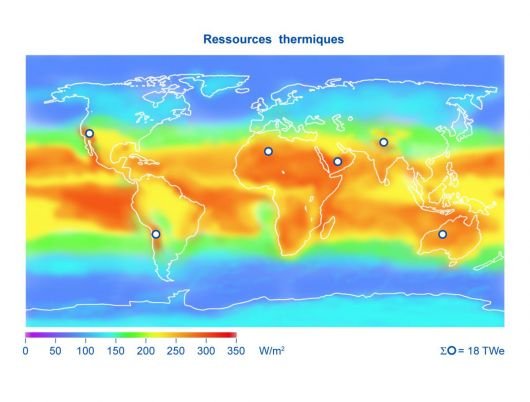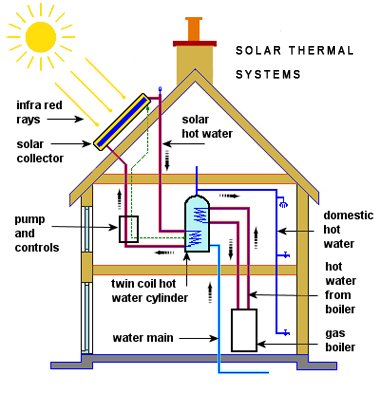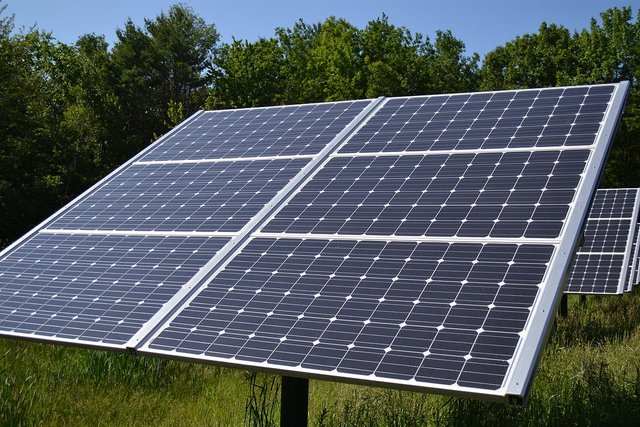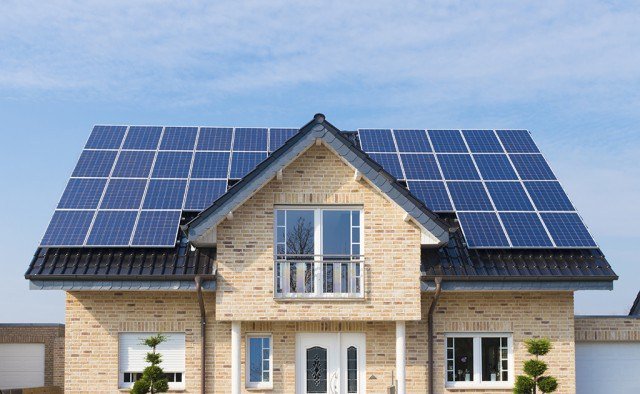The sun, the father of all energies.
The sun, the father of all energies.
Today I continue with this series of post in which I have embarked regarding electromagnetic spectra, more specifically with solar energy, since to speak of solar energy is to speak of the father of all energies.
Sunlight is part of the electromagnetic spectrum, that is, it is a type of electromagnetic wave that moves through space in all directions and reaches the Earth in a time of 8 minutes.

Source
When we talk about solar energy, we refer to solar thermal energy and photovoltaic solar energy.
Solar thermal energy.
Consists of heating a fluid taking advantage of the sun's energy, which would produce steam and, later, electrical energy. This is achieved by solar collectors or collectors.

Source
Photovoltaic Solar Energy.
In this case, sunlight would affect a photovoltaic cell that produces electrical energy directly.

Source
The Sun, source of life and origin of the other forms of energy that the hum
an being has used since its creation and evolution. It is estimated that the sun has shone in the sky for about five billion years and has not yet reached half of its existence.
Such a magnificent star can satisfy all our energy needs if we learn how to take advantage of it. It would be illogical to waste it especially when we can use by all the technically possible means this free, clean, inexhaustible and universally available energy source.
Photovoltaic conversion consists of the direct transformation of light energy into electrical energy. For this purpose, solar panels formed by photovoltaic cells (silicon or germanium) are used.

Source

Source
Benefits of solar energy.
- Renewable.
- Inexhaustible.
- Non-polluting.
- Avoid global warming.
- Reduce the use of fossil fuels.
- Reduce energy imports.
- Generates wealth and local employment.
- Contributes to sustainable development.
- It is modular and very versatile, adaptable to different situations.
- It allows applications for large-scale power generation and also for small cores isolated from the network.
Disadvantages.
- It is not 100% reliable.
- High initial investment.
- Efficiency problems.
- Complications of transfer.
- The materials used for solar panels can cause pollution.
- Negative energy balance.
- Installation area.
Types of solar panels.

Source
In conclusion.
The use and implementation of this energy bring environmental, educational, economic and social benefits. But it is also true that the cost and permanent maintenance of photovoltaic systems and other modes of use require large investments by each of the nations. Only by continuing the investigation can we reduce costs in what pertains to their permanence.
References.
- http://sunwatersolar.com/solar-thermal/what-is-solar-thermal
- https://www.studentenergy.org/topics/solar-thermal
- https://www.ingeteam.com/en-us/sectors/solar-thermal-energy/s15_60_p/products.aspx
- http://www.renewableenergyworld.com/solar-energy/tech/solarpv.html
- Photovoltaic Solar Energy by: Marcelo Romero Tous.